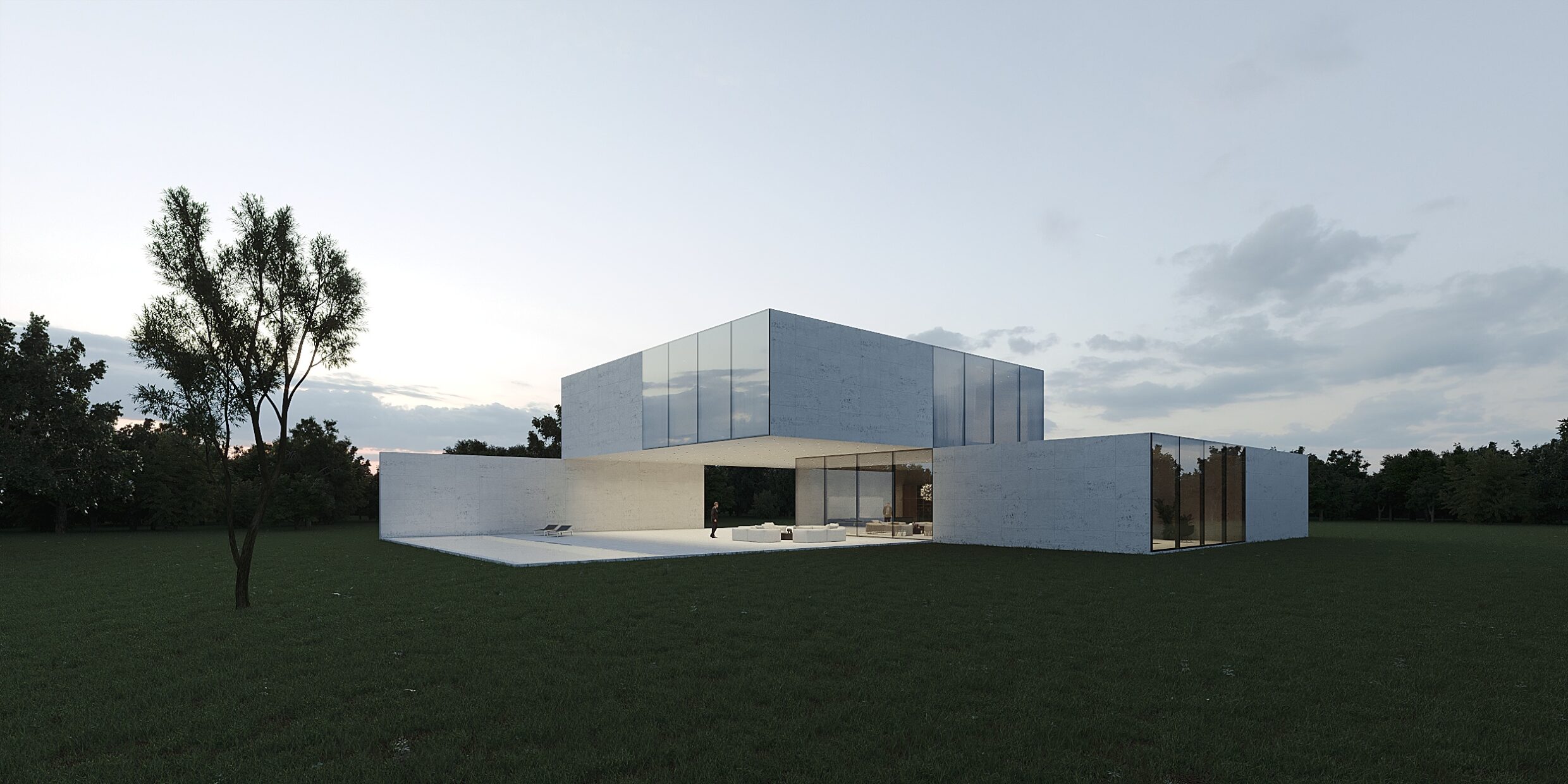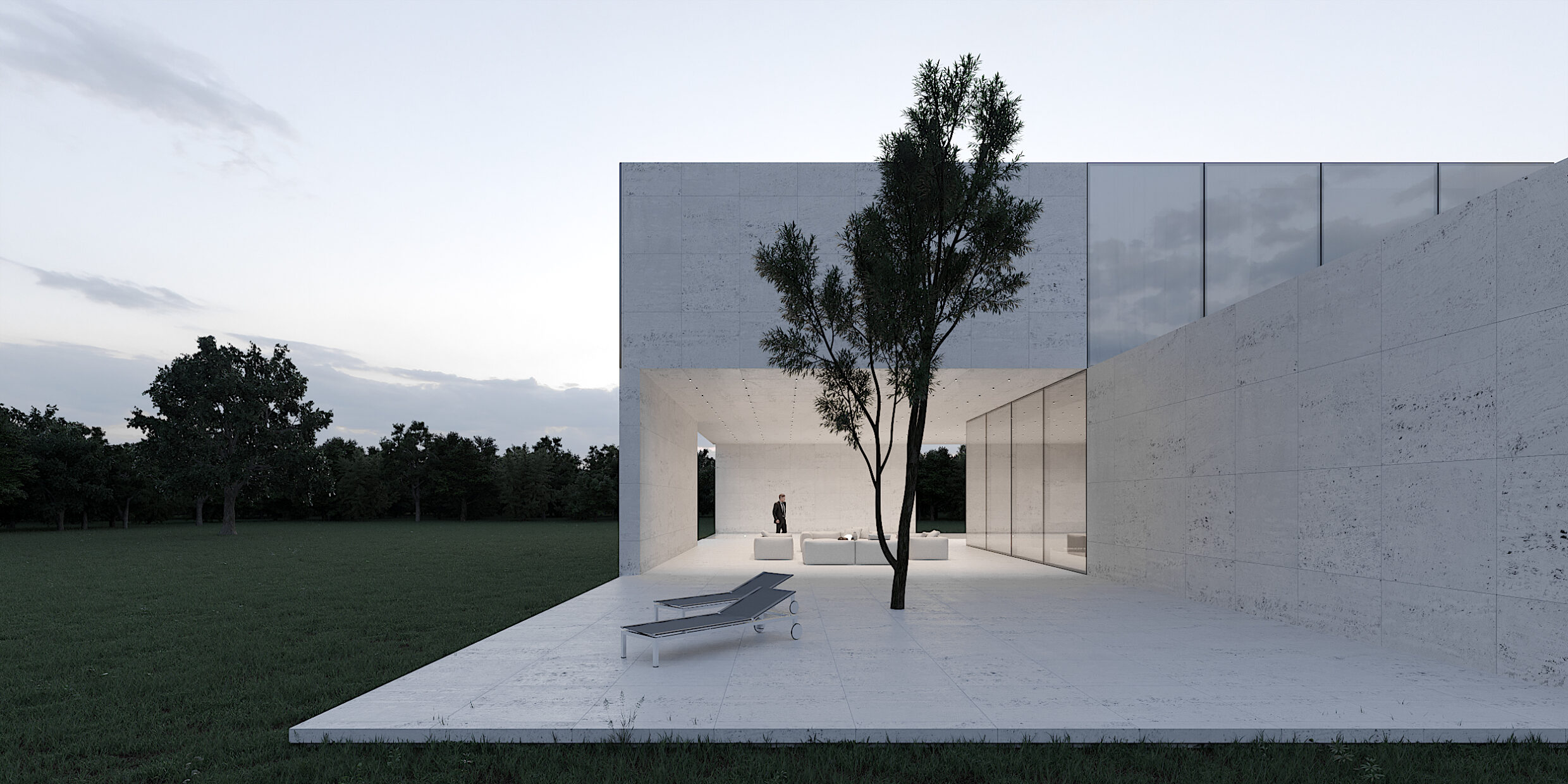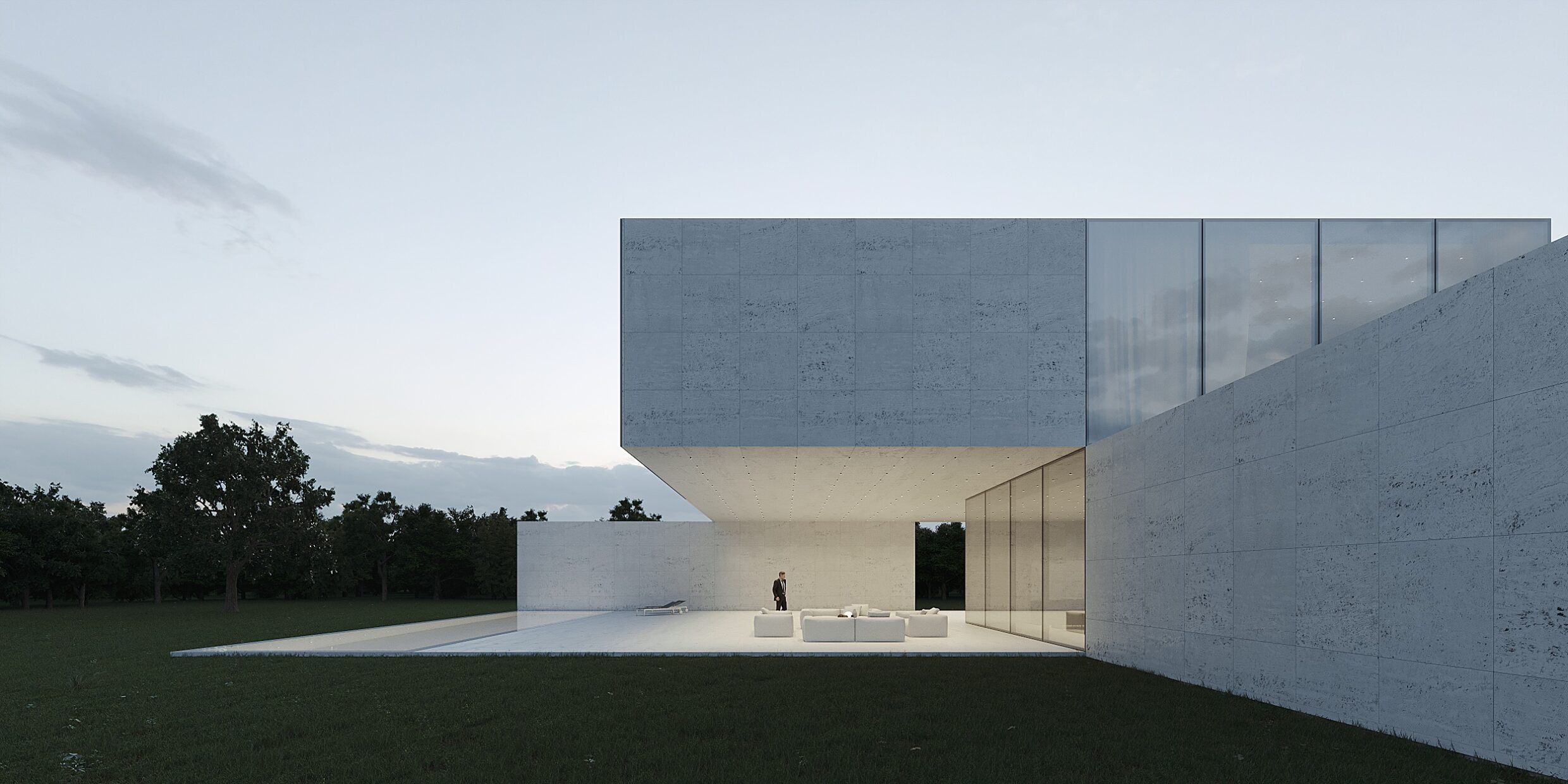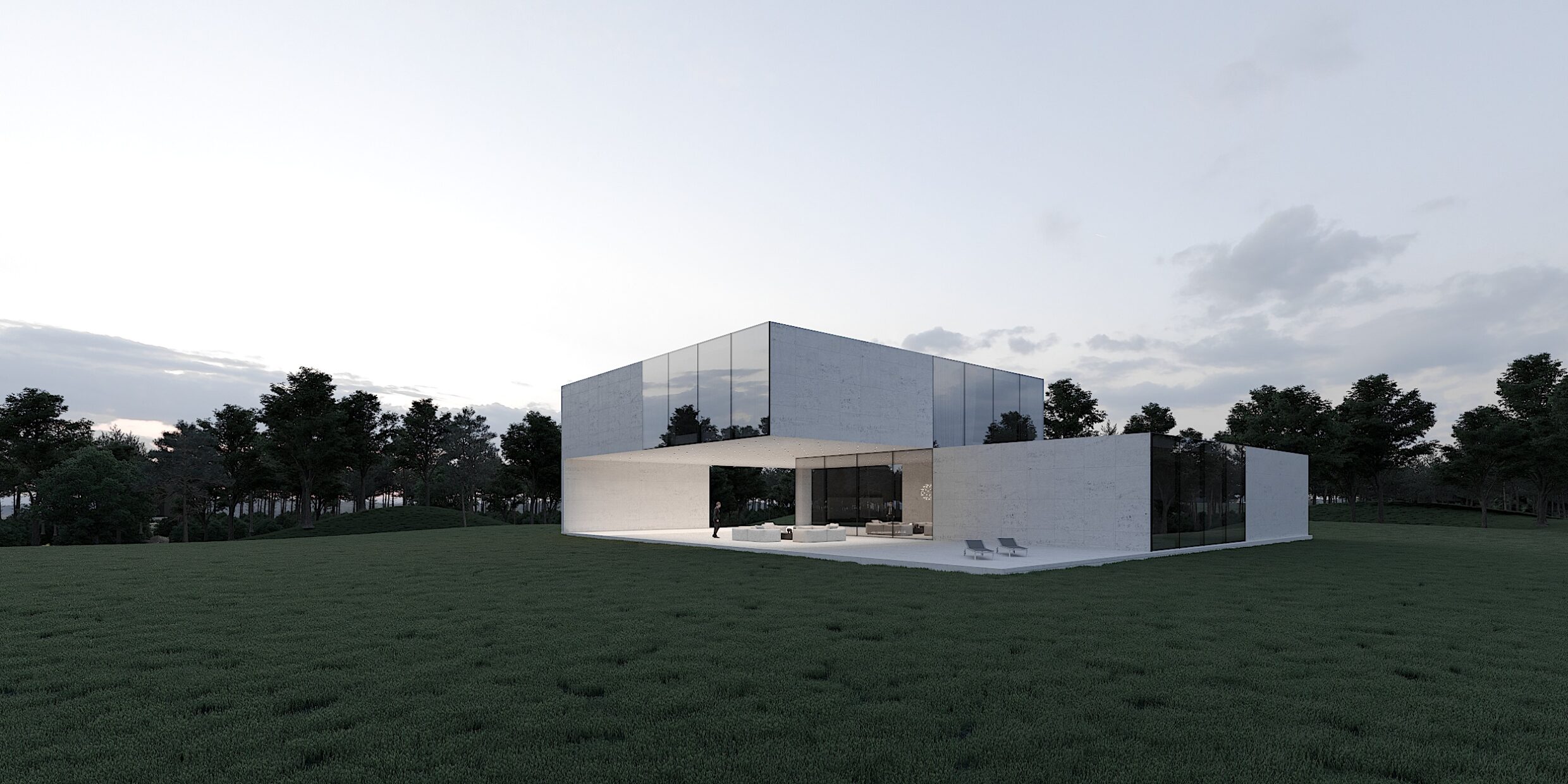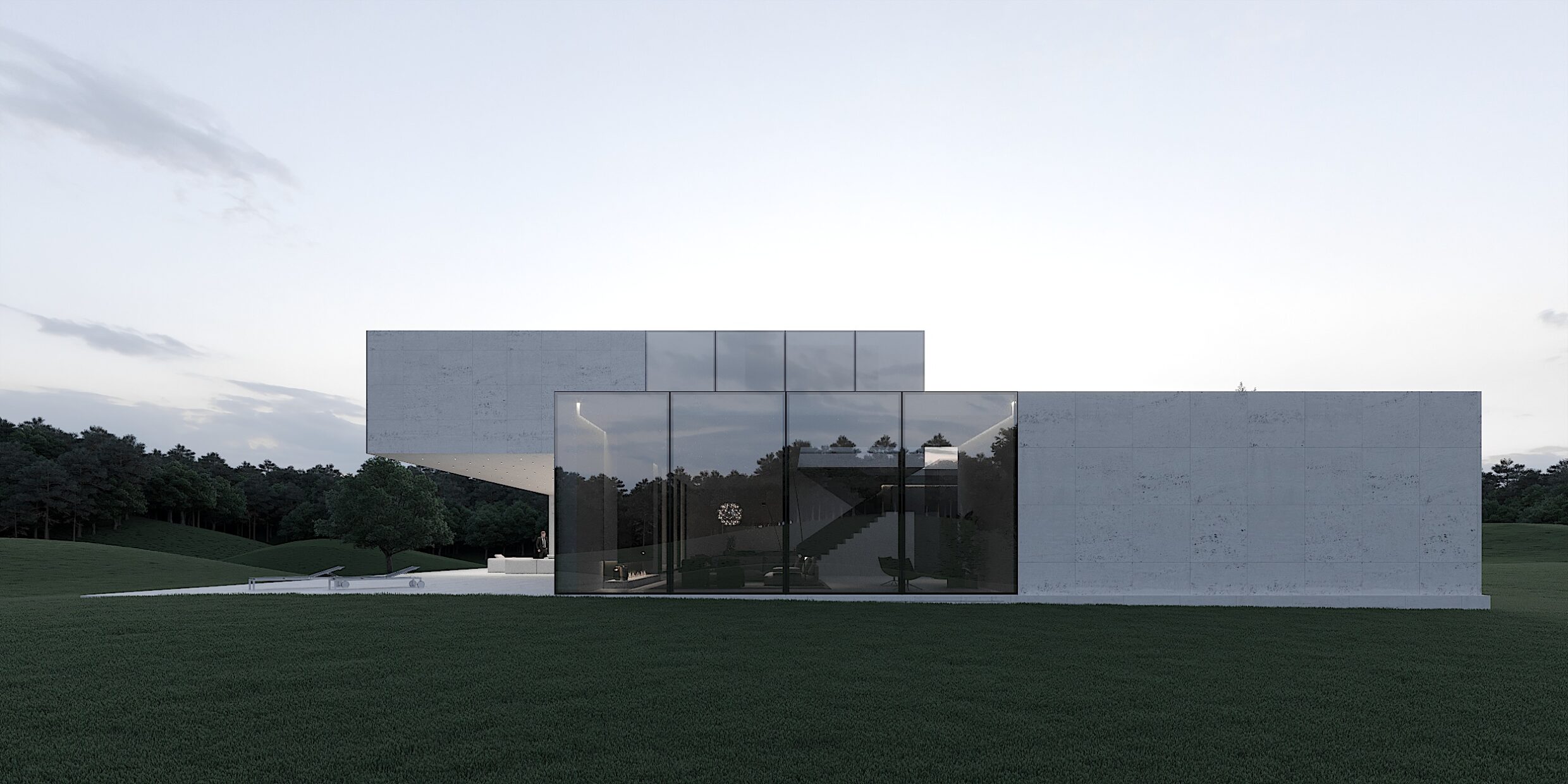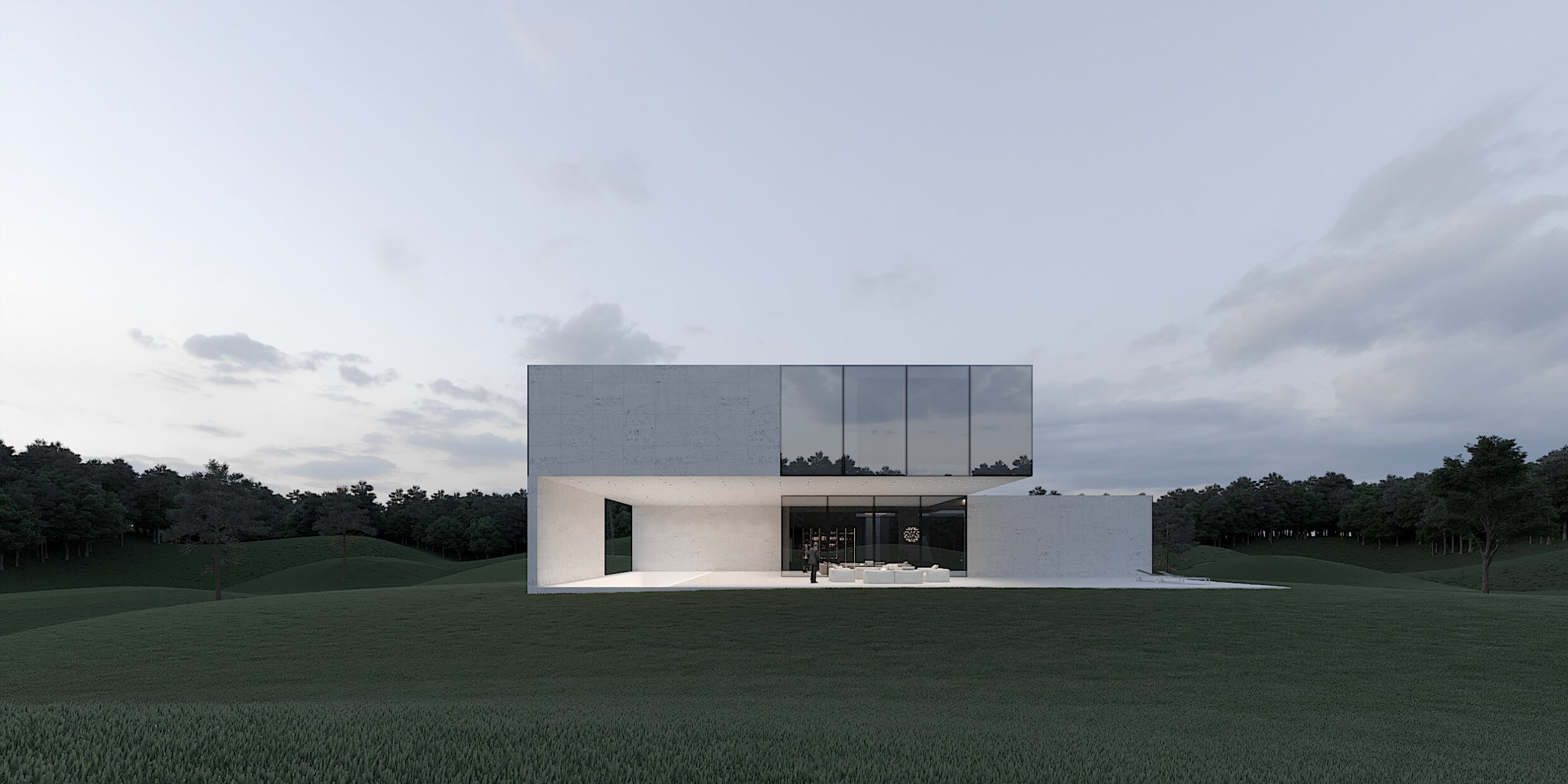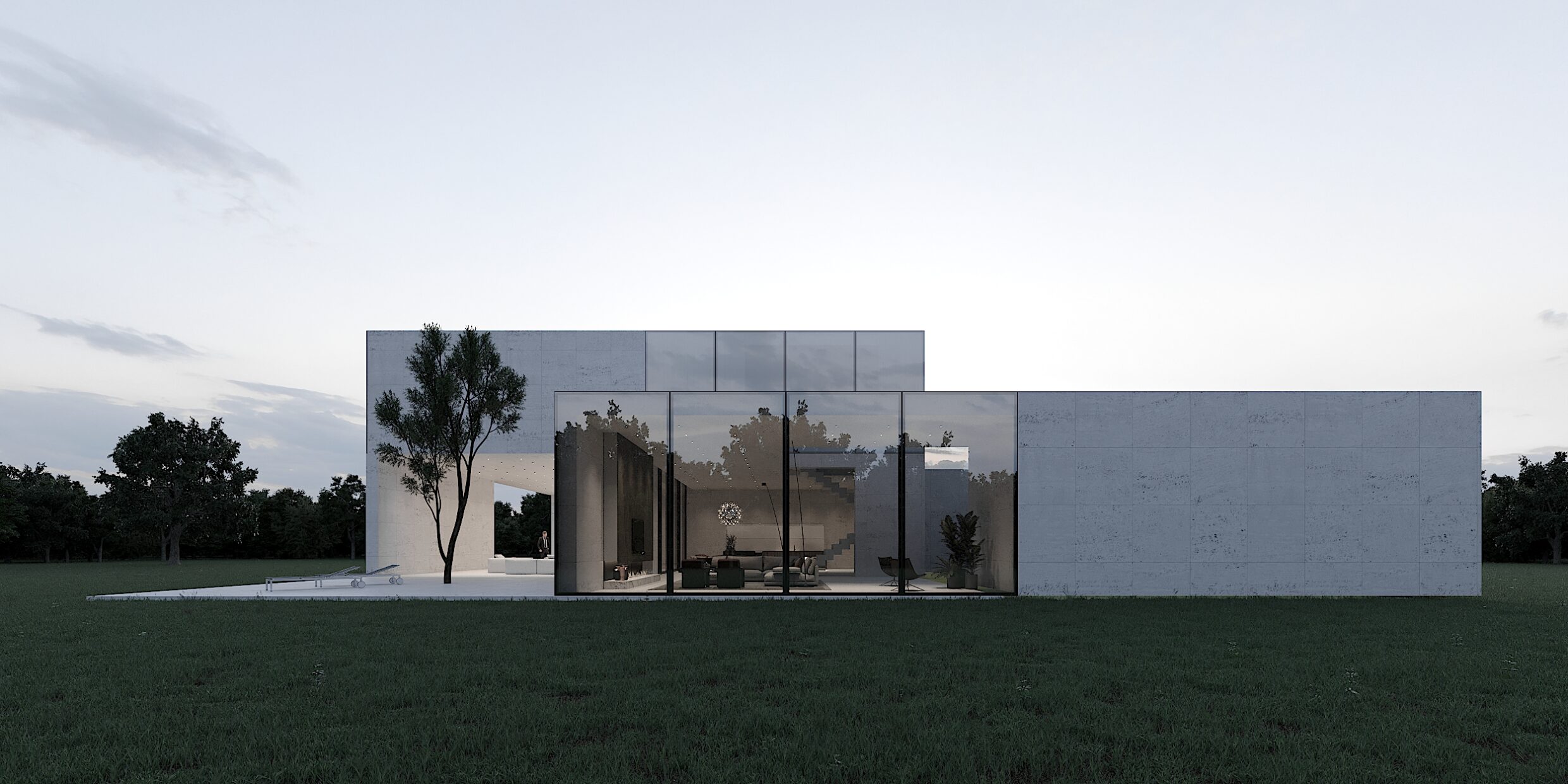
Projects TESLA HOUSE




The Ukrainian architectural and design bureau MONO architects has implemented the concept of a futuristic house in Kyiv with massive concrete walls and huge panoramic windows.
The creative team of MONO architects, led by the architect Victoria Oskilko, tried to imagine how Nikola Tesla’s house would look like today. “An inventor of the twentieth century would probably be very picky about his house. So, we tried to consider the basic requirements for modern space, while simultaneously transforming the crown of technological achievements into a perfect architectural form.” – says Victoria about the project.
Tesla House stands isolated on a large meadow near the forest. The asymmetrical sequence of spaces, including the main entrance, garage and terrace, forms the main axis towards the field and the woods around, complemented by a concentric three-dimensional design.
Concrete volumes stacked next to each other form a geometric structure that includes external voids, which have become minimalistic terraces with covered and open areas. These spaces are designed for relaxation – with a soft area for company and sun loungers for daytime sleep under the shade of a nearby growing tree. Most of the facades have exposed concrete walls, floors and ceilings, which create a sense of integrity in the space.
“In the exterior of the space, we tried to echo the minimalistic design of innovative Tesla cars – we drew clear geometric lines and removed everything unnecessary.” – Victoria comments.
Located in an open natural space, the building is a combined home and quiet workplace for the owner. With floor-to-ceiling glass walls, the interior encourages limitless creativity and meditative relaxation.
The care-free concept is also achieved thanks to total automation – the house itself updates the firmware of smart systems: the installed sensors regulate temperature, humidity, light following with the time of day and atmospheric indicators.
MONO also took care of the safety of the home. The house is equipped with innovative security systems against outside threats. The architects also used quality natural materials in the exterior and interior, ensuring the absence of toxic chemical fumes.
